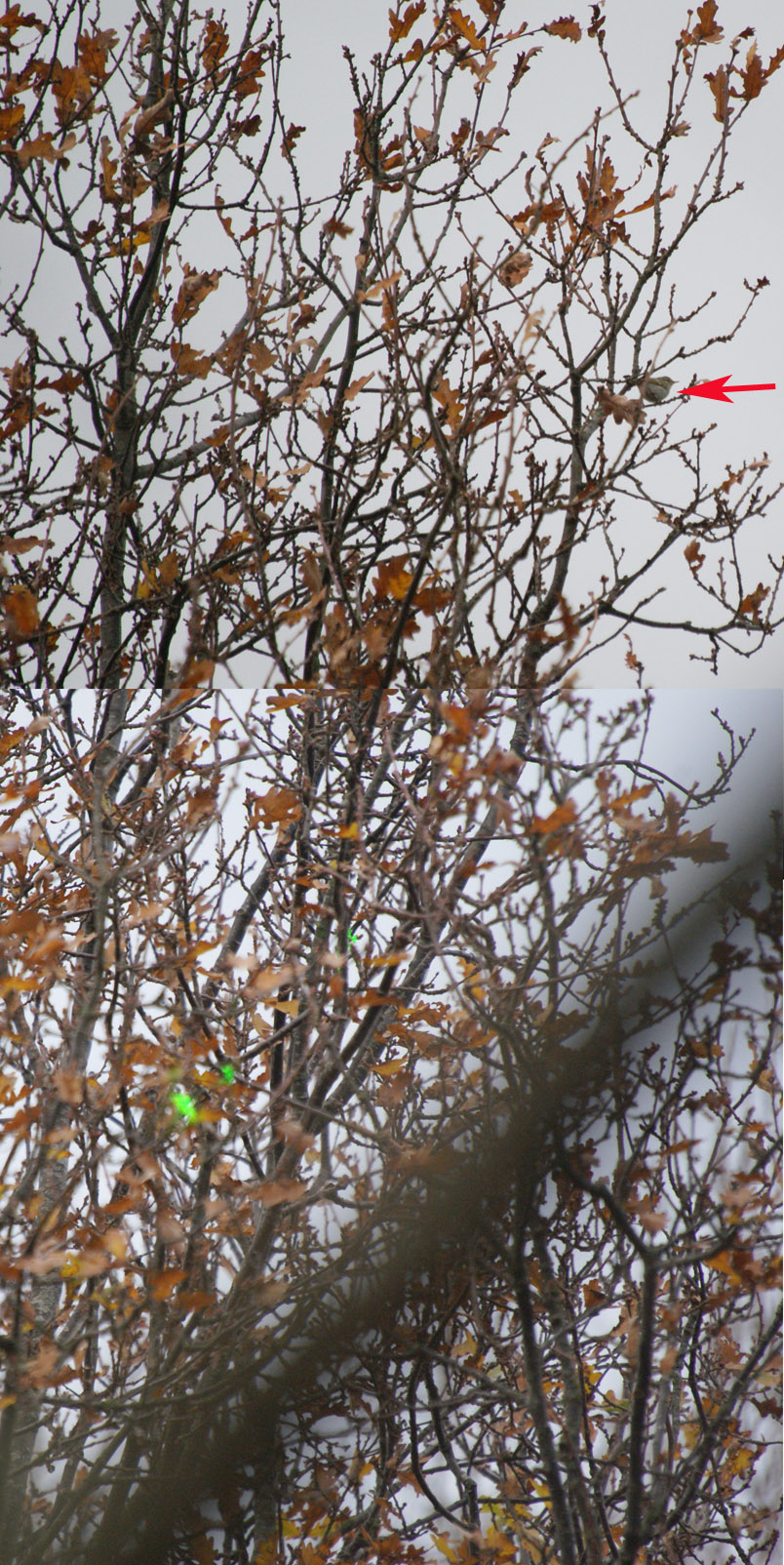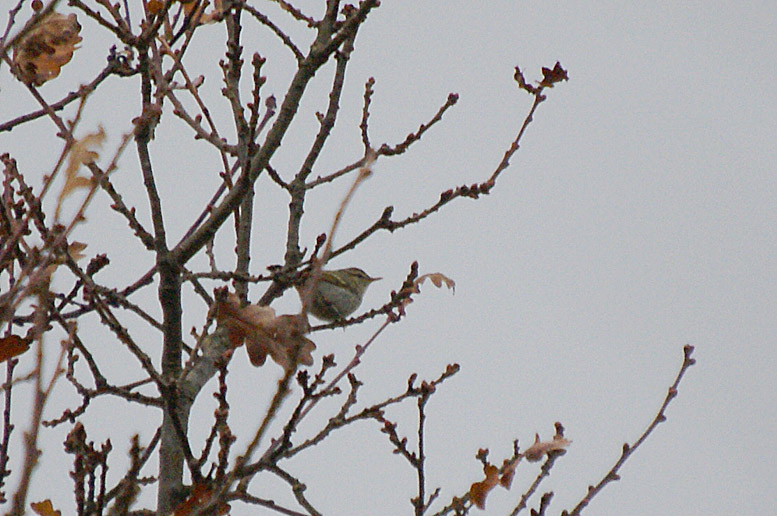On 23 November 2013 at the ringing station De Glinte, Kamperhoek Fl a Phylloscopus-warbler was trapped and ringed. At first sight the ringers thought it was a Yellow-browed Warbler Phylloscopus inornatus, but all had the feeling it didn't fit that species. They consulted fellow ringers by sharing the excellent photographs of Mervyn Roos and it was confirmed it was a Two-barred Warbler Phylloscopus plumbeitarsus. News of the location was spread a few days later and on Friday 29 November in the afternoon Reinoud Vermoolen found the bird again in the for the public open area of Kamperhoek (the bird was actually in the restricted area).
The next day and subsequent days the bird was found to be in a large area but was very elusive. Moreover it moved quickly and never stayed on the same branch. In the afternoon of Sunday 1 December it was seen sitting in a treetop and was seen and photographed by a large crowd. I had given my laserpointer to Ronald Messemaker (an expierenced birding guide) and thanks to his accurate pointing everybody had a good though short sighting. Except for me... I was not able to pick up the bird properly and I only saw it flying over my head when it flew off. At that moment everybody cheered by relief, but I felt as the only Dutch football supporter between hundreds of Spanish supporters after Iniesta scored the 1-0 for Spain in the 2010 World Cup Final.Nevertheless two days later on 3 December I managed to hear the bird calling and on 14 December, I finally saw the bird for a few seconds in my binoculars. The bird lingered on with the last record on 3 January 2014 when the bird was heard by three birders.
On 2 December Sander Bot was able to record several calls of the bird, including some more monosyllabic calls, which most probably had caused confusion on the previous records in 1996 and 2009.
